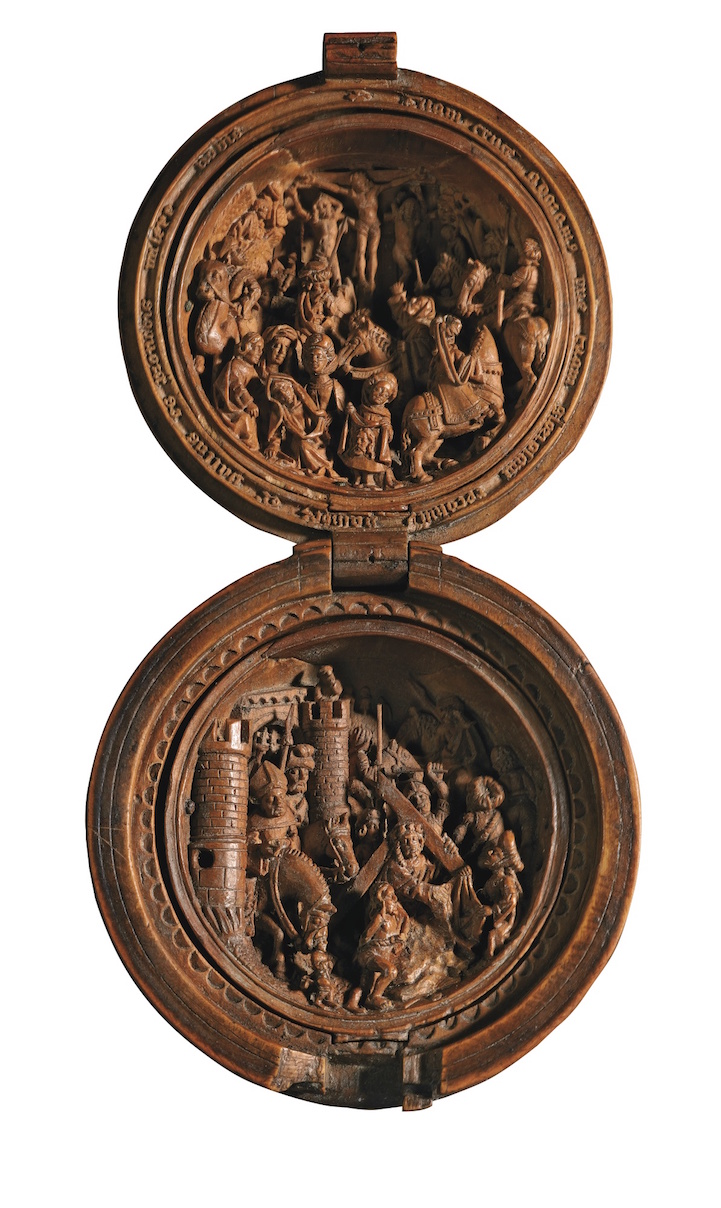| Plautilla Nelli, Pained Madonna |
This is the world that our subject for today's blog is born into. Plautilla Nelli was born to a wealthy fabric merchant in 1524. Both she and her sister, Costanza, also became a nun. Nelli became a painter and Costanza became a writer.
Nelli is reported to have been self taught. Fortunately her convent of Santa Caterina da Siena was not fully cloistered, so Nelli could have had access to live models. She ran a working studio in the convent that where other artists would regularly visit. She inherited the drawings of Fra Bartolomeo, a prominent painter of the time. Artists such as Perugino, Andrea del Sarto and Giovanni Antonio Sogliano may have influenced Nelli.
Her studio was likely a gathering place for her patrons. She was apparently well known and her paintings were in demand. In his Lives of Artists, Giorgio Vasari wrote that Nelli “had so many works in the houses of gentlemen that it would be tedious to speak of them all.”
In my mind there are three things that elevate Nelli to Bad Ass Status; the courage to show her subjects feelings, the definite feminine point of view, and the size of some of her work.
 |
| Plautilla Nelli Last Super |
Subjects in Nelli's paintings appear to be very much present in the moment. Look at her Last Supper. In the center Jesus lovingly comforts an apostle. The third apostle to the right appears concerned, thoughtful. Three apostles on the left are in deep, somewhat agitated conversation. You can almost hear what they are saying.
 | ||
| Plautilla Nelli, Lamentation |
I believe Nelli also used size as a way to convey the messages behind her paintings. The Lamintation is nine and a half feet tall and six feet ten inches wide. During Nellis time it was displayed in the convent in such a way that the viewer would have been on eye level with the weeping mourners. This would have been a powerful way to draw the viewer into the scene.
Nelli's Last Supper is so large that the viewer could feel as though they are sitting at the table. At 23 x 6.5 feet it is the largest painted work by an early female artist. I think about what it would have taken to produce such a work. The largest painting I've ever undertaken was four feet by five feet and it was exhausting!! I can imagine Nelli day after day working on the images; climbing a ladder to add the tiny detail on the serving bowls or sitting on a scaffold to add the decorative trim on Jesus collar.
We may never know Nelli's thought process or why she made the choices she did but, thankfully, we have many of her works to admire and be inspired by.
+++++
Additional Information on the Last Supper. This magnificent painting was rolled up and in storage from 1808 until 1853. During this time it sustained significant damage. The restoration was developed by The Advancing Women Artists Foundation and The Florence Committee of the National Museum of Women in the Arts and is expected to be completed in October of 2019.
+++++
Selected References
Advancing Women Artists Foundation http://advancingwomenartists.org/artists/plautilla-nelli
Plautilla Nelli – the Nun who started a Women’s Art Movement in Florence in the 1500’s – now stronger than ever. https://www.beyondtheyalladog.com/2017/03/plautilla-nelli-the-nun-who-started-a-womens-art-movement-in-florence-in-the-1500s-now-stronger-than-ever/
Garrard, Mary D. Repositioning Plautilla Nelli’s Lamentation. Essay. In Conversations: An Online Journal of the Center for the Study of Material and Visual Cultures of Religion (2014). doi:10.22332/con.ess.2014.1
Michalska, Magda . Restoration of “Last Supper” You Had No Idea Existed. https://www.dailyartmagazine.com/restoration-of-last-supper-by-plautilla-nelli/
On a side note - if you aren't familiar with the Web Gallery of Art I'd encourage you to visit. It's a great resource that allows you to enlarge the paintings so that you can view detail.



